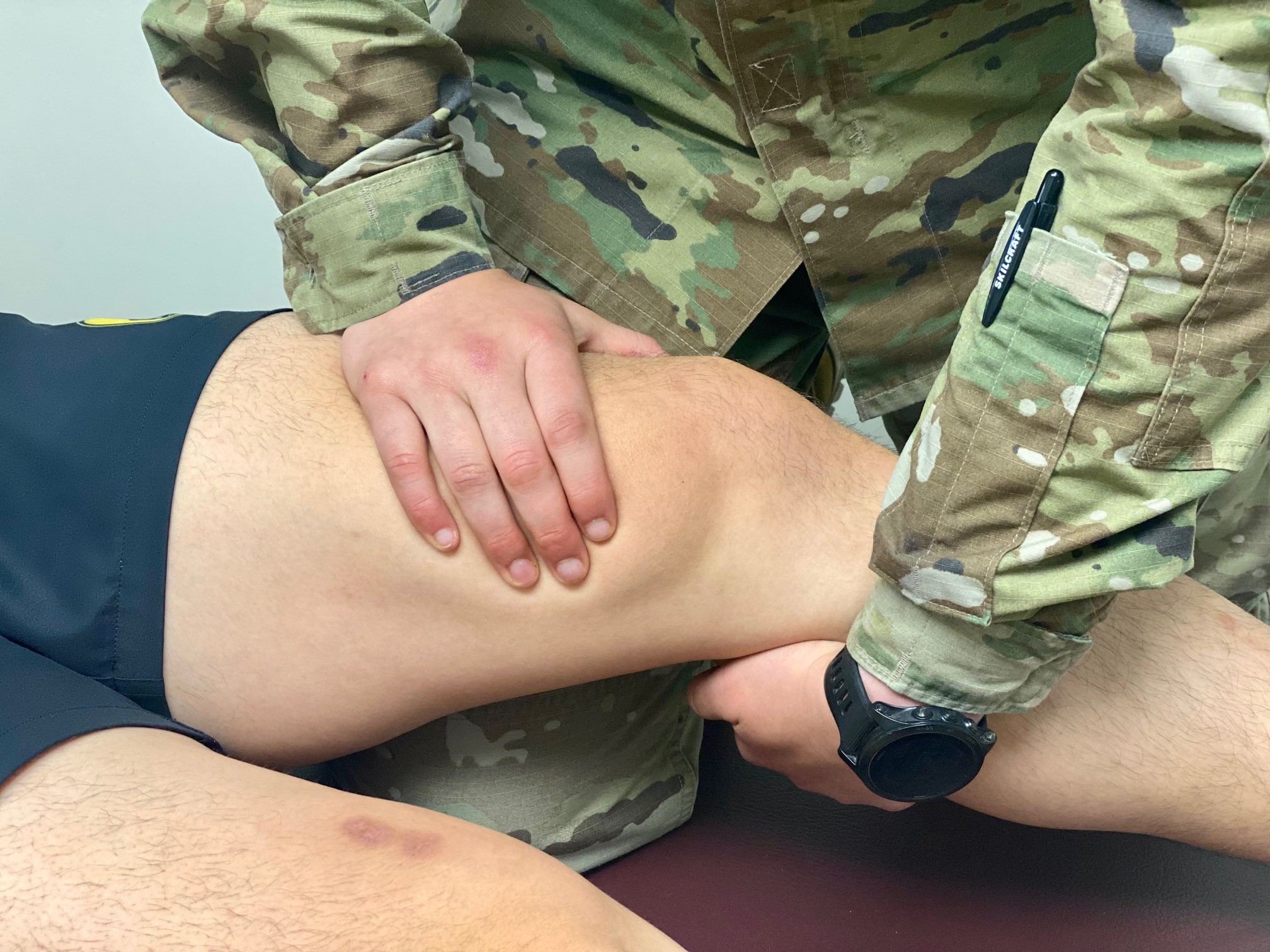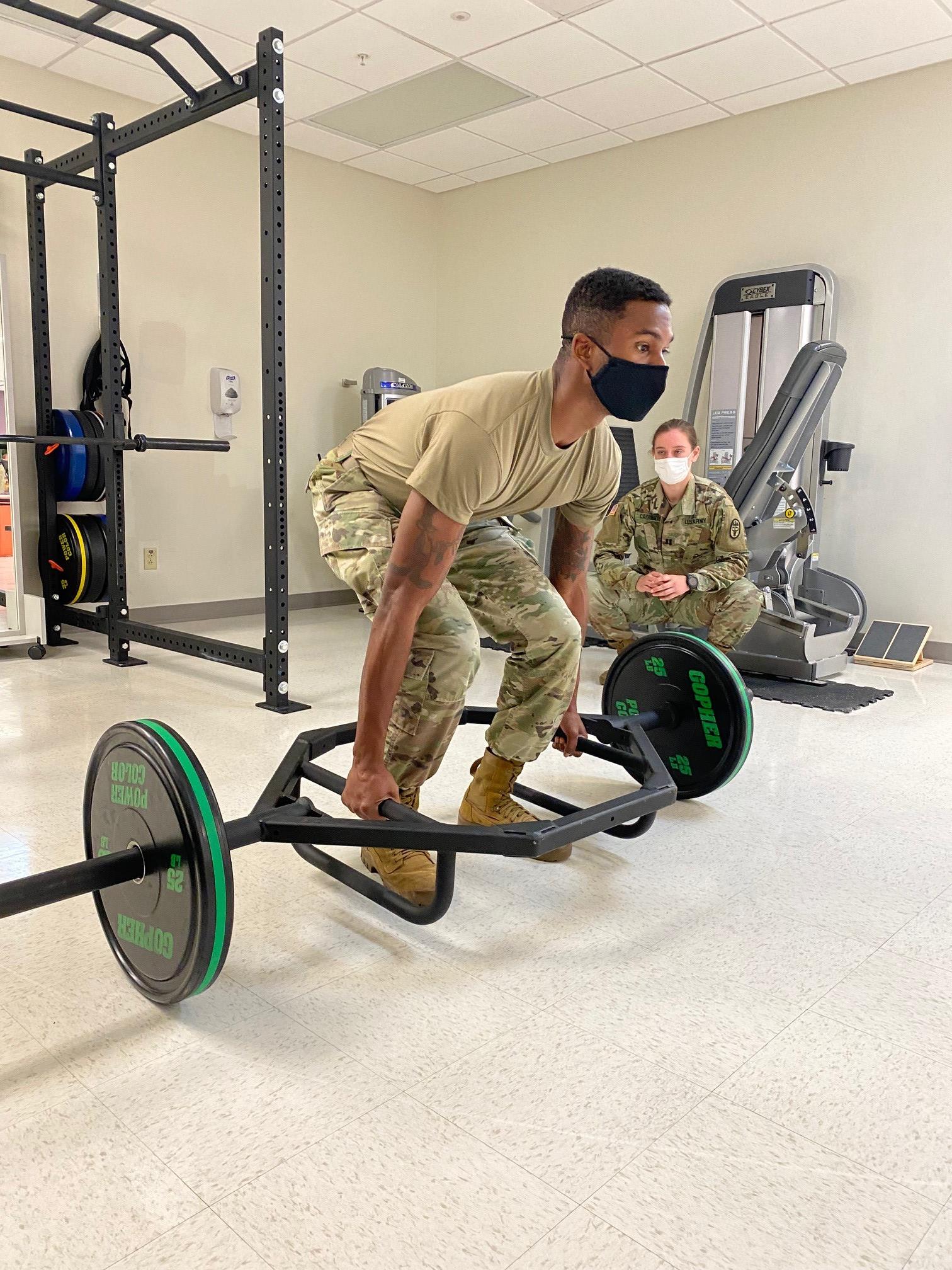FORT POLK, La. –
October is National Physical Therapy Month, an annual opportunity to raise awareness about the benefits of physical therapy. At Bayne-Jones Army Community Hospital, physical therapy is critical to our Army Readiness mission and we have a number of enthusiastic, professionals on our staff to provide this critical health care service.
Maj. Tony Williams, chief of rehabilitation services for BJACH, served four years as a signal specialist before using his Montgomery GI Bill to pursue an undergraduate degree in sports medicine followed by a doctorate degree in physical therapy at the University of Florida. Williams spent nine years working in private practice and as a Department of the Army civilian physical therapist at Fort Huachuca before commissioning and returning to active duty.

Williams said he returned to active duty in part because of the health professional scholarship incentive.
“Physical therapy is a very rewarding field and our goal is to influence readiness,” he said. “70 percent of sick call visits are muscular skeletal related injuries. Through early intervention we can have a meaningful impact and prevent long term problems.”
Williams said understanding the daily duties and required tasks of each individual Soldier is important for positive rehabilitative and physical therapy outcomes.
“Any time a patient comes in we do a complete assessment. We figure out what is going on, what is bothering the patient and what caused the injury or pain they are experiencing,” he said. “Prior level function, goals and what the patient is hoping to achieve will drive our treatment strategies.”
Capt. Jessica Carrignan, assistant chief of physical therapy for BJACH, said imaging is not always conclusive and that is where the testing and diagnosis physical therapists do provide value to the patient.

“Early on I knew I wanted to be a physical therapist in the military, after I completed my undergraduate degree in kinesiology and military studies I applied for direct commissioning program,” she said. “I was fortunate to have been selected to participate in the Army-Baylor doctoral program in physical therapy at Joint Base San Antonio-Fort Sam Houston, Texas. The Baylor program was established in the 1970s with the physical therapy needs of our Soldiers in mind.”
Williams said physical therapy has been around for over 100 years.
“Soldiers returned from WWI with amputations and had to learn to live within their new limitations,” he said. “Physical therapy has historically been viewed as an ancillary service, but within the last ten years there has been an evolution in the field. Our diagnostic skills are value added. The military has been at the cutting edge of this evolution. We are credentialed at the maximum level of our license requirements. It is incumbent upon us to do a lot of the orthopedic diagnostics.”
Williams said the team at BJACH is working on a direct access model by having physical therapist available at sick call and refining the diagnostic process to ensure correct imaging is ordered when necessary.
“The body does a fantastic job of healing. Movement is a very good way to help the body heal,” he said. “We work on coping strategies and goal setting as well as physical intervention to get people moving again.”
Carrignan said it’s important to highlight their profession during National Physical Therapy Month.
“Most people don’t understand what we do, what we can do and what we can provide. I think most people look at us as an adjunct to other medical professions; like this is where I have to go before I get my MRI or I get my surgery,” she said “They don’t understand the value of physical therapy. Physical therapy not only improves outcomes when used together with other medical treatments; it can also be used to prevent the need for more invasive and risky medical interventions. Advocating for our profession is huge because we aren’t pretending we can fix everything, but we are definitely a better alternative to opioid medications which we know is negative and harmful.”